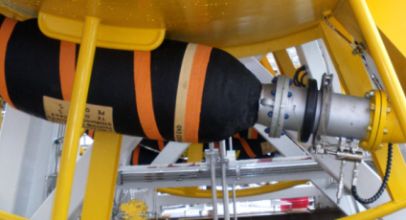Techflow Marine had an existing breakaway coupling design, supplied by their sister company Techflow Flexibles. As a fluid dynamics and optimisation specialist, Wilde Analysis was approached to help optimise their design for minimum pressure drop.
Company
Techflow Marine provides a range of specialist products to the Offshore Oil & Gas and Marine industries. Their market focus is directed towards the prominent emergence and accelerated development of offshore reserves utilising FPSO/FSU units, whilst accommodating the requirements of conventional fixed platforms and jack-up rigs.
Their current range of products includes FPSO/FSU Fluid Transfer Systems, Hose Handling Systems, Tandem Mooring Systems, Large Bore Flexible Hose Systems, Marine Coupling Systems and associated equipment.
Operating from the company’s Head Office in the North East, their manufacturing activities are co-ordinated and scheduled to its principle manufacturing locations in the UK and Singapore, as well as subcontractors in China, Korea and the USA.
Challenge
A breakaway coupling (also known as a safety break) is a safety component used to prevent one of the most serious hazards in the loading process of fluid media: the disproportionate tensile load on the load line. This is caused when, for example, tankers and trains drive off too soon or by ships drifting. In such an event, an engineered weak link gives way and spring-loaded valves seat on both sides of the resulting break in the line.
An axially compact unit must therefore house two moving elements capable of seating at a diameter of approximately line bore. This implies a potentially tortuous flow path through the valve, with resultant pressure drop. The design challenge is to engineer a flow path, within tight axial and radial constraints, that minimises the causes of head loss.
Solution
The fluid dynamics team at Wilde Analysis rapidly ran computational fluid dynamics (CFD) simulations to predict the flow through the existing coupling using ANSYS software. This provided insights into the origins of the losses and, together with the expertise of Wilde’s engineers, enabled improvements to the flow path’s profile to be identified.
CFD was then used as a “virtual test” platform for these modifications. A significant improvement in a few design iterations was made within just a few days. The indicated reduction in pressure drop was subsequently confirmed by a physical test.
Results for the final design were delivered in the form of a calculation tool, allowing Techflow to calculate the coupling’s pressure drop for other flow rates and fluids.
Business Benefits
• By generating a clear visual representation of flow inside the valve, “trial and error” was eliminated so that important product improvements could be undertaken quickly.
• This product was for a 6” coupling operating at a significant flow rate typical of such applications. Hire of a flow test loop is costly, so the reduction in prototype testing through the use of simulation has enabled significant savings.
• The valuable insight provided by the use of CFD to help develop a demonstrably lower loss coupling.
Wilde’s optimisation work ensured that our breakaway coupling design is as efficient as possible. What their engineering team produced was fantastic – we have done flow analysis ourselves in the past, but the level of detail they provided was staggering. The results were very easy to understand and to follow through, and their combined expertise resulted in the project being finished much more quickly than we expected. Cost-wise, this was a drop in the ocean considering the benefits to our business in having this work done.
Techflow Marine